If you’re planning a trip to Cebu, Philippines and want to know the best cebu tourist spot to visit North and South, we’ve got you covered! Cebu is a province in the Philippines that boasts a rich history, culture, and natural wonders. From historical landmarks to breathtaking scenery, there is something for everyone in Cebu.
To help you plan your trip, we have compiled a list of the top 20 Cebu tourist spot to visit in 2025. Each Cebu tourist spot has its unique charm, reflecting the province’s diverse offerings. From centuries-old churches to stunning beaches, these spots are worth visiting to experience the best of Cebu.
Check out our guide below for a brief history and description of each Cebu tourist spot. Explore the beauty of Cebu and immerse yourself in its rich culture and history:
- Temple of Leah
- Sirao Garden
- Museo Sugbo
- Cebu Heritage Monument
- Yap Sandiego Ancestral House
- Fort San Pedro
- Magellan’s Cross
- Basilica del Santo Niño
- Cebu Taoist Temple
- Mactan Shrine
- Moalboal (Sardine Run and Turtle Marine Sanctuary)
- Kawasan Waterfalls
- Kawasan Canyoneering
- Whale Sharks
- Sumilon Island
- Tumalog Waterfalls
- Osmeña Peak
- Monastery of the Holy Eucharist (Simala Shrine)
- Bantayan Island
- Cebu Safari and Adventure Park
1. Temple of Leah
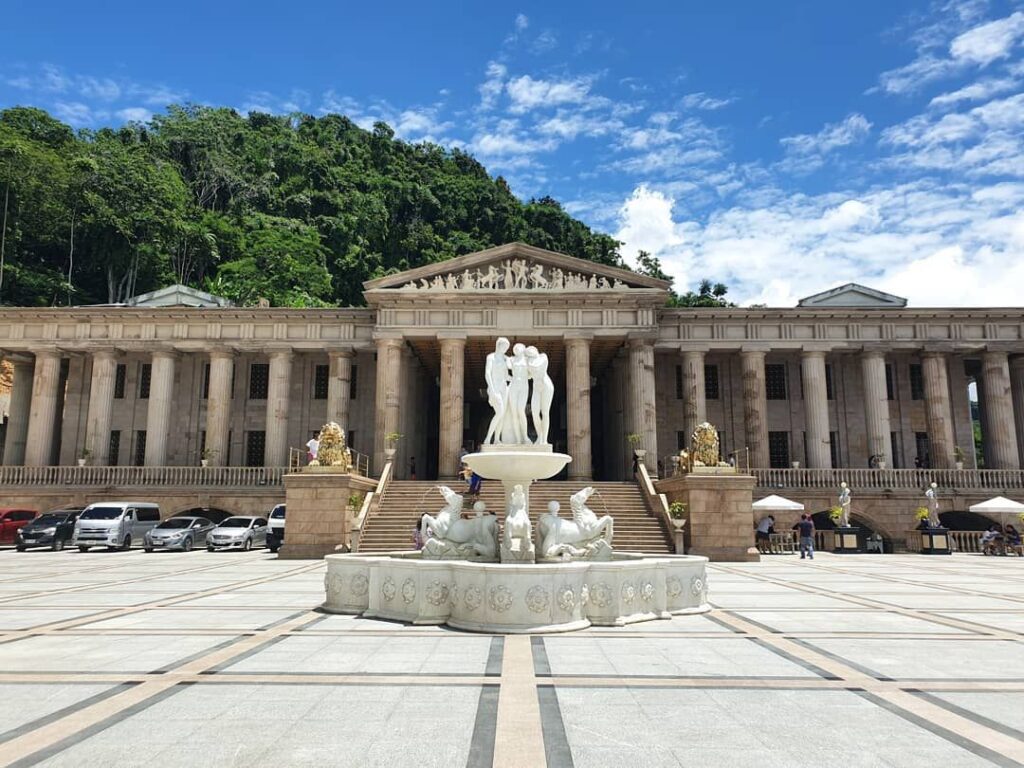
The Temple of Leah is a grandiose and imposing structure located in Busay, Cebu, Philippines. Built in 2012 by Teodorico Soriano Adarna, a wealthy businessman and grandfather of actress Ellen Adarna, the temple serves as a testament to the love and devotion that Adarna had for his late wife, Leah Albino-Adarna.
The temple is a massive structure that spans over 7,000 square meters and is perched on a hill that offers breathtaking views of the surrounding countryside. It is a mix of Romanesque and Byzantine architectural styles, with intricate carvings, statues, and pillars that evoke a sense of grandeur and timelessness.
Visitors to the Temple of Leah can explore the various rooms and galleries that showcase the life and achievements of Leah Albino-Adarna. These include her personal belongings, photographs, and awards that reflect her life as a philanthropist and socialite. The temple also houses a grand staircase, a Roman-style atrium, and a museum that displays various antiques and artworks from around the world.
One of the most impressive features of the Temple of Leah is the 9-foot bronze statue of Leah Albino-Adarna that stands at the center of the atrium. The statue was crafted by the renowned Filipino sculptor, Eduardo Castrillo, and is a stunning tribute to the memory of Leah.
Aside from the cultural and historical significance, the Temple of Leah is also a popular tourist spot in Cebu due to its picturesque location and the stunning views of the city and the nearby mountains. The temple is open daily, and visitors can take a guided tour or explore on their own.
Hence, we put it on top of Cebu tourist spots guide.
2. Sirao Garden

Sirao Garden, also known as the “Little Amsterdam of Cebu”, is a popular Cebu tourist spot located in Busay, Cebu, Philippines. The garden is famous for its beautiful celosia flowers that bloom in various colors, including pink, purple, yellow, and red. Visitors can enjoy walking through the garden and admiring the stunning flowers while taking pictures and enjoying the fresh air.
Aside from the celosia flowers, Sirao Garden also offers stunning views of the surrounding mountains and cityscape. Visitors can climb to the top of the viewing deck and take in the panoramic views. The garden is also a great place to relax and unwind, with plenty of seating areas and picnic spots available for visitors.
In addition to the beautiful scenery, Sirao Garden is also home to several food and souvenir stalls that offer a variety of local treats and trinkets. Visitors can sample traditional Filipino snacks and purchase souvenirs to take home with them.
To get to Sirao Garden, visitors can take a tour package, private transportation, taxi or hire a motorbike from Cebu City. The garden is located about 30 minutes away from the city center and is open from 6:00 AM to 6:00 PM daily. The entrance fee is affordable, making it a popular destination for both locals and tourists.
3. Museo Sugbo
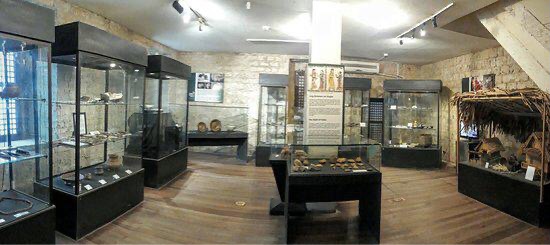
A must-visit destination for history buffs and cultural enthusiasts visiting Cebu City in the Philippines. This museum showcases the rich heritage and diverse history of the island of Cebu, from the pre-colonial era up to the present day.
The museum is housed in a beautifully restored 19th-century prison complex, which adds to the charm and character of the museum. Visitors can explore the different galleries and exhibitions, which are arranged thematically and chronologically. The galleries showcase a wide range of artifacts, photographs, and multimedia displays that provide a comprehensive overview of the region’s history.
One of the highlights of Museo Sugbo is the Pre-Colonial Gallery, which features a collection of prehistoric artifacts, including pottery, weapons, and jewelry, that were used by the indigenous people of Cebu. The Spanish Colonial Gallery is another notable exhibit, which showcases the impact of Spanish colonization on Cebu and the Philippines as a whole.
Other galleries include the American Colonial Gallery, which covers the period of American rule in the Philippines, and the Post-War Gallery, which examines the impact of World War II on Cebu and the country as a whole. The museum also has a section dedicated to the modern history of Cebu, which includes exhibits on the city’s economy, culture, and society.
In addition to the galleries, Museo Sugbo also hosts a variety of educational programs and events, such as lectures, workshops, and cultural performances. The museum’s gift shop offers a range of souvenirs and cultural items, including books, postcards, and traditional crafts.
4. Cebu Heritage Monument
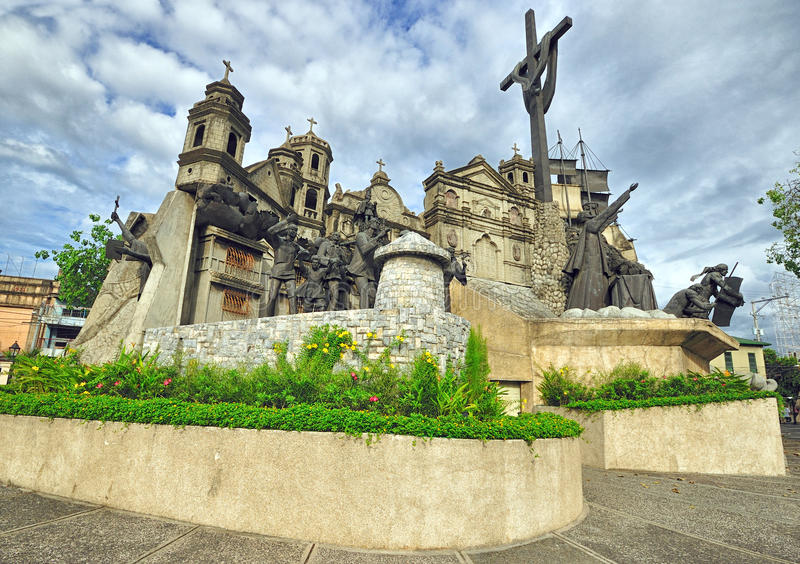
A famous tourist spot located in the Parian district of Cebu City in the Philippines. It is a visually stunning representation of Cebu’s rich history and culture, showcasing significant events and personalities from the city’s past.
The monument was created by the talented Cebuano artist Eduardo Castrillo and was unveiled in December 2000 to celebrate the 500th anniversary of the arrival of Portuguese explorer Ferdinand Magellan in the Philippines. The monument is made up of a series of intricate bronze sculptures and depicts various historical scenes such as the Battle of Mactan, the arrival of Magellan, and the conversion of the natives to Christianity.
Visitors to the Cebu Heritage Monument can walk around the base of the monument and appreciate the intricate details of the sculptures. The monument also has a light and sound show that depicts the history of Cebu in a dramatic and entertaining way. The show is presented in both English and Cebuano, making it accessible to both local and international visitors.
Aside from the monument itself, there is a small museum located at the base of the monument that contains historical artifacts and documents related to Cebu’s history. Visitors can learn about the city’s rich cultural heritage and gain a deeper appreciation for the significant events and personalities that have shaped Cebu’s past.
5. Yap Sandiego Ancestral House
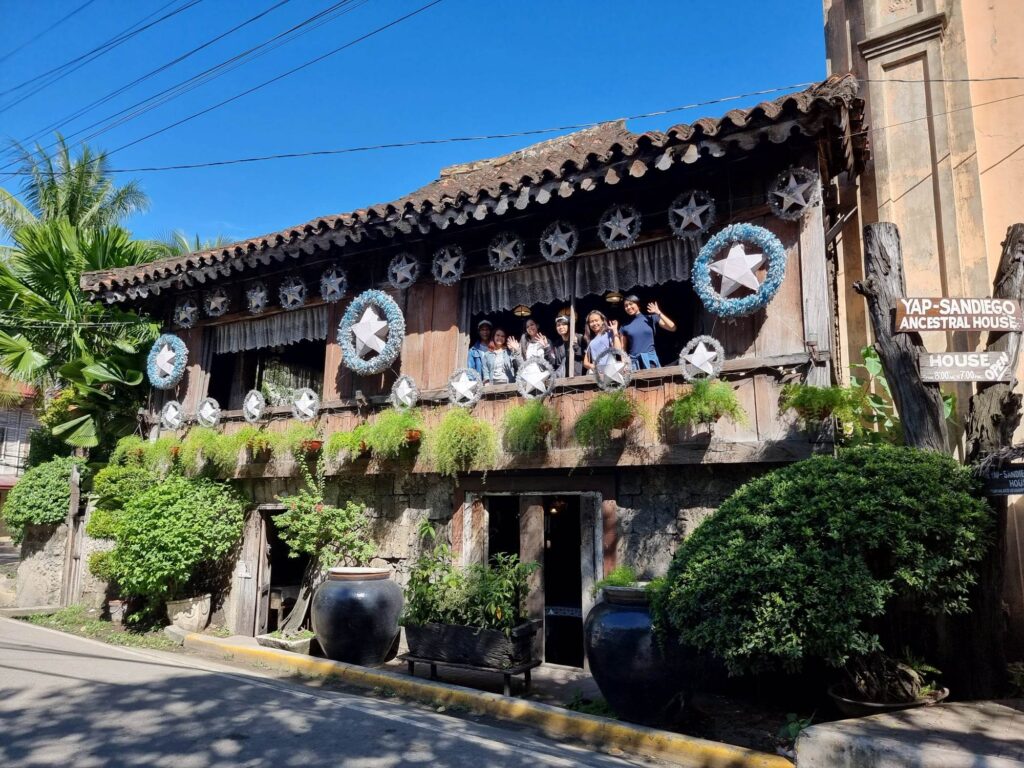
The Yap Sandiego Ancestral House is one of the oldest existing houses in Cebu City, Philippines. It was built in the late 17th century and has been home to several generations of the Yap and Sandiego families. Today, it is one of Cebu tourist spots and a prime example of traditional Filipino architecture.
Visitors to the Yap Sandiego Ancestral House can explore its various rooms and learn about the history of the Yap and Sandiego families. The house contains many artifacts and relics from the past, including antique furniture, artwork, and household items. There is also a courtyard and garden where visitors can relax and enjoy the peaceful atmosphere.
The house has a rich history, having survived fires, earthquakes, and wars over the centuries. During World War II, it served as a sanctuary for civilians and a hospital for the wounded. The house has been passed down through several generations of the Yap and Sandiego families, and it remains a treasured family heirloom to this day.
In recent years, the Yap Sandiego Ancestral House has become a popular destination for tourists interested in learning about Cebu’s history and culture. It is located in the Parian District of Cebu City, which is known for its rich heritage and historical significance. The house offers a glimpse into the lives of the Yap and Sandiego families and provides a fascinating insight into Filipino architecture and culture.
6. Fort San Pedro
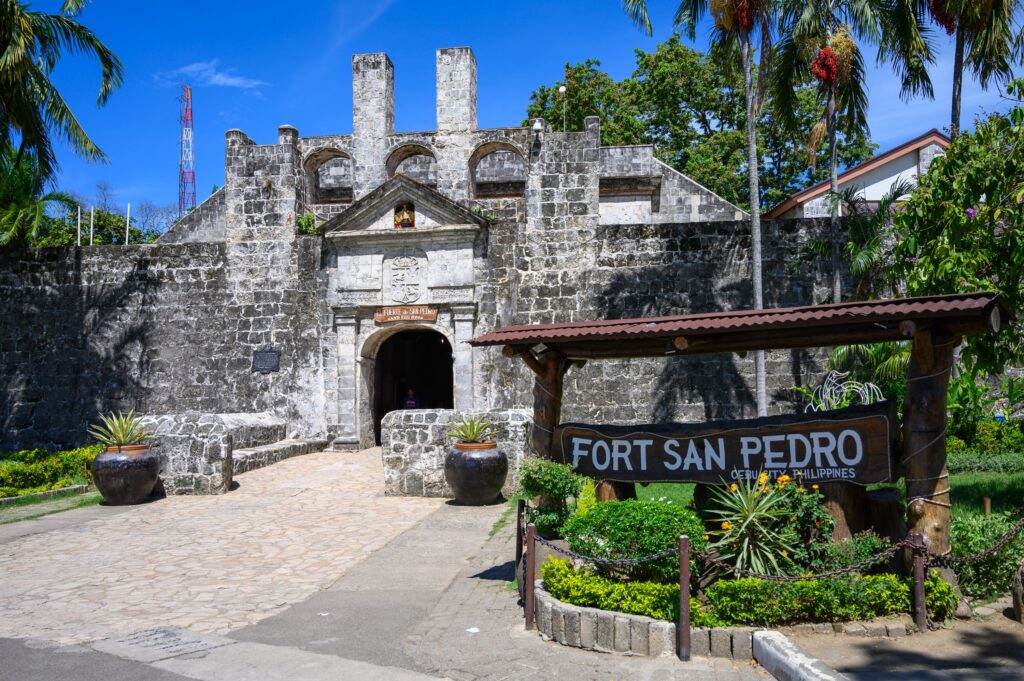
Fort San Pedro, located in the city of Cebu in the Philippines, is a historical landmark that is worth visiting. The fort was built in 1738 by the Spanish conquistador, Miguel López de Legazpi, as a military defense structure to protect the city from attacks by pirates and hostile native groups. The original fort was made of wood, but was later rebuilt using stone in the 19th century.
Today, the fort is a popular Cebu tourist spot and a must-visit for anyone interested in Philippine history. Visitors can explore the fort’s grounds and see the various cannons and artillery that were once used to defend the city. Inside the fort, there is a museum that showcases various artifacts and exhibits related to the history of Cebu and the Philippines.
One of the main features of the fort is the triangular shape of its walls, which is said to represent the Holy Trinity. The walls are made of coral stone and are approximately 20 feet high, with watchtowers located at each corner. The fort also has a moat that surrounds it, which was once filled with water and served as an additional layer of protection.
7. Magellan’s Cross
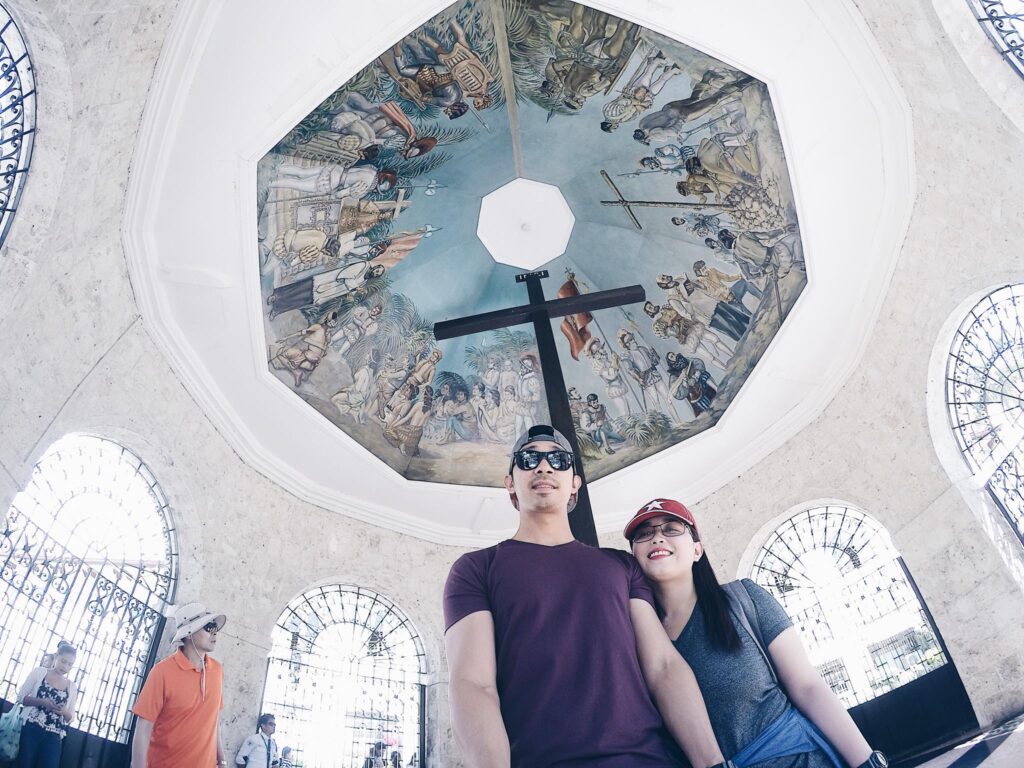
Magellan’s Cross is a famous landmark and tourist in the city of Cebu, Philippines, which has a rich history and cultural significance. The cross is said to have been planted by the Portuguese explorer Ferdinand Magellan in 1521, marking the arrival of Christianity in the Philippines.
According to historical accounts, Magellan arrived in the Philippines in March 1521, and he and his crew were warmly welcomed by the local chieftain Rajah Humabon, who later converted to Christianity. As a symbol of their newfound faith, Magellan planted a large wooden cross on the shores of Cebu.
Over the years, the original cross deteriorated due to natural wear and tear, and it was encased in a new structure made of tindalo wood in 1835 to protect it from further damage. In 1933, a bronze plaque was placed on the base of the cross to commemorate the event.
Today, Magellan’s Cross is housed in a chapel located in the heart of Cebu City, where it is a popular tourist and a revered symbol of the Philippines’ Christian heritage. Visitors can enter the chapel to see the cross and offer prayers and candles.
Aside from its religious significance, Magellan’s Cross also serves as a reminder of the country’s colonial past and the enduring influence of Spanish culture in the Philippines. The cross has withstood the test of time and has become an iconic landmark that symbolizes the country’s rich history and cultural heritage.
8. Basilica del Santo Niño
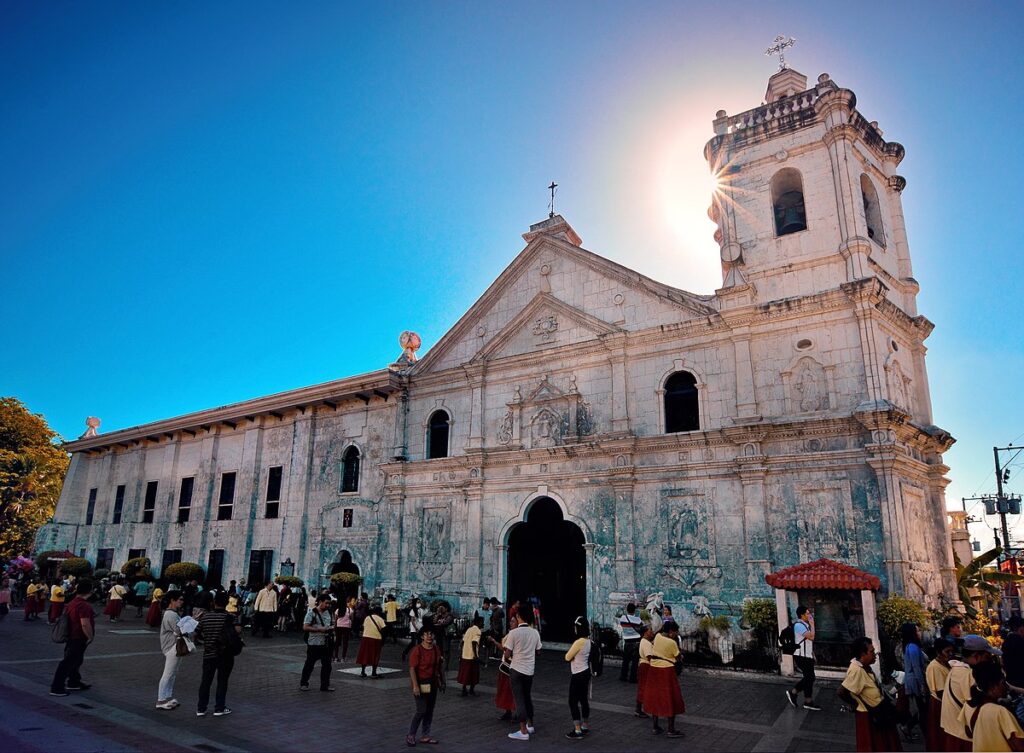
The Basilica del Santo Niño is a well-known religious site and a must-visit tourist spot in Cebu, Philippines. This basilica houses the miraculous image of the Santo Niño, considered one of the most revered and beloved religious icons in the country. The image is believed to be the oldest religious relic in the Philippines, gifted to the wife of a Spanish conquistador in the 16th century.
Over the years, the Basilica del Santo Niño has undergone several transformations. The original church, which was built in the 16th century, was destroyed by fire in the 18th century. The current church was rebuilt in the 19th century and has since become an important pilgrimage site for Catholics across the country.
One of the highlights of visiting the basilica is seeing the image of the Santo Niño. The statue is housed in a glass case in the main altar of the church, and is dressed in a variety of colorful clothing throughout the year. Devotees come from far and wide to offer prayers and attend mass in front of the image.
In addition to the religious significance of the basilica, the church also has an interesting history. The basilica was the site of a major battle between Spanish forces and Filipino revolutionaries during the Philippine Revolution in the late 19th century. The church was heavily damaged during the battle, and was subsequently restored to its current form.
Today, the Basilica del Santo Niño continues to be an important part of Cebuano culture and religious life. Visitors can attend daily masses and special religious events, and explore the various exhibits and artifacts on display in the church museum. Whether you’re a devout Catholic or simply interested in the history and culture of the Philippines, the Basilica del Santo Niño is definitely worth a visit.
9. Cebu Taoist Temple
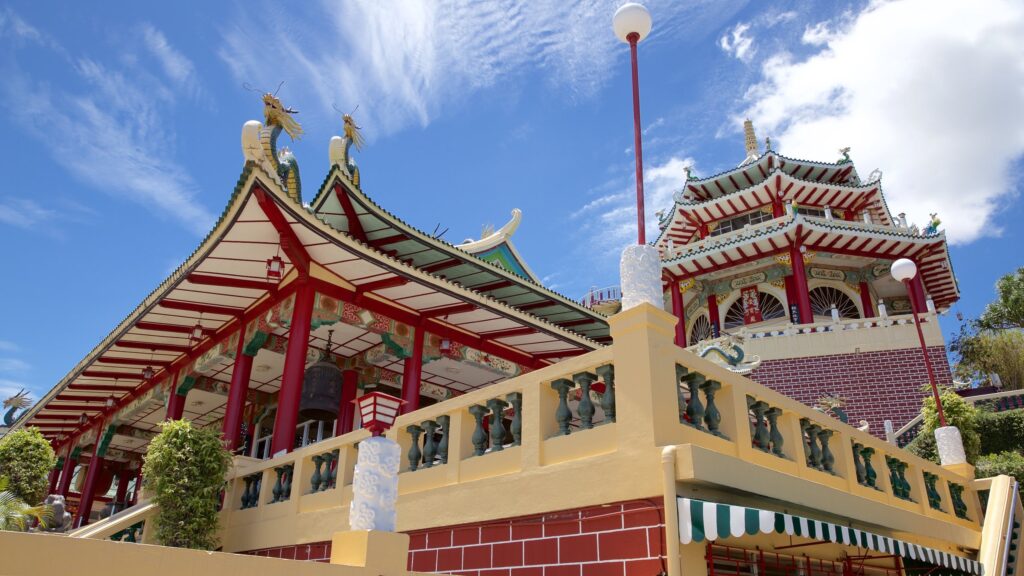
A popular tourist spot located in Beverly Hills Subdivision, Cebu City, Philippines. It was built in 1972 by Chinese residents of Cebu and is the center of Taoism in the city.
The Cebu Taoist Temple boasts a breathtaking climb of 99 steps for visitors to explore. As you begin your ascent, you’ll first encounter the “Waterfall of Prosperity”, the initial set of 81 steps located at the entrance of the temple. Each step represents one of the 81 chapters in Taoism’s holy text, the Tao Te Ching.
Once you’ve completed this set of steps, you’ll enter the temple grounds and discover the “Stairway to Heaven”, a final set of 18 steps that leads to the temple itself. These steps are said to represent the 18 levels of heaven in Taoism. Combined, the two sets of steps create a total of 99 steps, providing visitors with a unique and symbolic journey towards enlightenment.
Inside the temple, you’ll find a number of altars dedicated to various deities, including the Jade Emperor, the goddess of mercy Guan Yin, and the god of wealth Bi Gan. Visitors are welcome to offer incense and pray at these altars.
The temple also features a tranquil garden and pond, which make for a peaceful place to reflect and meditate. There is also a gift shop on-site where you can purchase souvenirs and items related to Taoism.
When visiting the Cebu Taoist Temple, it’s important to remember to dress modestly and respectfully. Visitors are also asked to remove their shoes before entering the temple and to keep quiet to maintain the temple’s peaceful atmosphere.
10. Mactan Shrine
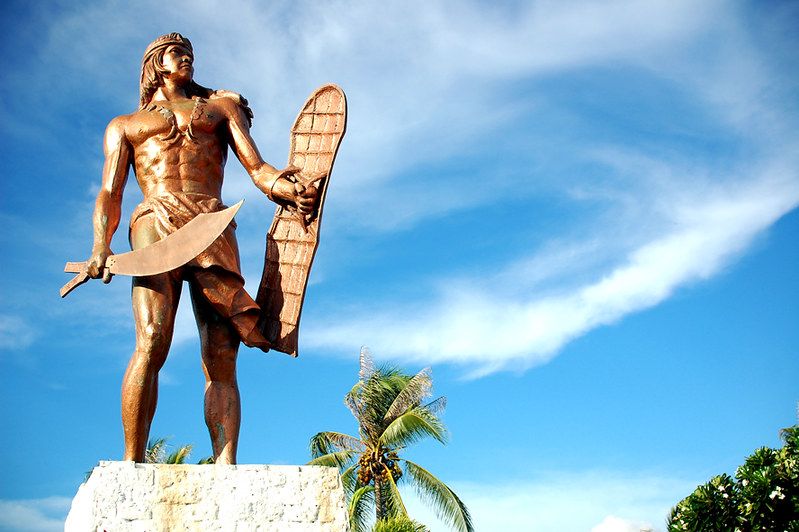
Mactan Shrine is a historical site located in Lapu-Lapu City, Cebu, Philippines. It is a commemoration of the Battle of Mactan, a significant event in Philippine history. The battle took place on April 27, 1521, between the forces of the indigenous chieftain Lapu-Lapu and the expeditionary force led by Portuguese explorer Ferdinand Magellan.
The shrine features a bronze statue of Lapu-Lapu, who is considered a hero for his victory against the Spanish. The statue stands on a pedestal and holds a traditional weapon called a kampilan. The monument is located on a plaza with a landscaped garden, a pond, and a small museum that displays artifacts related to the battle.
Visitors can also explore the Magellan Marker, which is a small obelisk located near the shrine. It marks the spot where Magellan was killed during the battle. The area around the shrine is also home to several souvenir shops, restaurants, and a beach.
The Mactan Shrine is a popular tourist spot. It is a significant symbol of Filipino heritage and an important reminder of the country’s struggle for independence. The site is often visited by school groups, history enthusiasts, and those who wish to pay their respects to the brave warriors who fought in the battle.
11. Moalboal (Sardine Run and Turtle Marine Sanctuary)

Moalboal, a small town in the Philippines, is renowned for its marine biodiversity, particularly the Sardine Run and the Turtle Marine Sanctuary.
The Sardine Run is a natural phenomenon that occurs just off the coast of Moalboal, specifically around Panagsama Beach. It involves a massive grouping of sardines, also known as a school, shoal, or run. The number of sardines is hard to estimate, with some saying hundreds, thousands, or even millions. This spectacle can be witnessed year-round, and it’s an incredible sight to behold as you snorkel among the swirling mass of fish.
In addition to the sardine run, Moalboal is also home to many sea turtles. These turtles can often be found swimming gracefully along the shores, feeding off algae clinging to the corals. They are usually in the shallower area closer to the beach, while the sardine run is slightly further out.
12. Kawasan Waterfalls
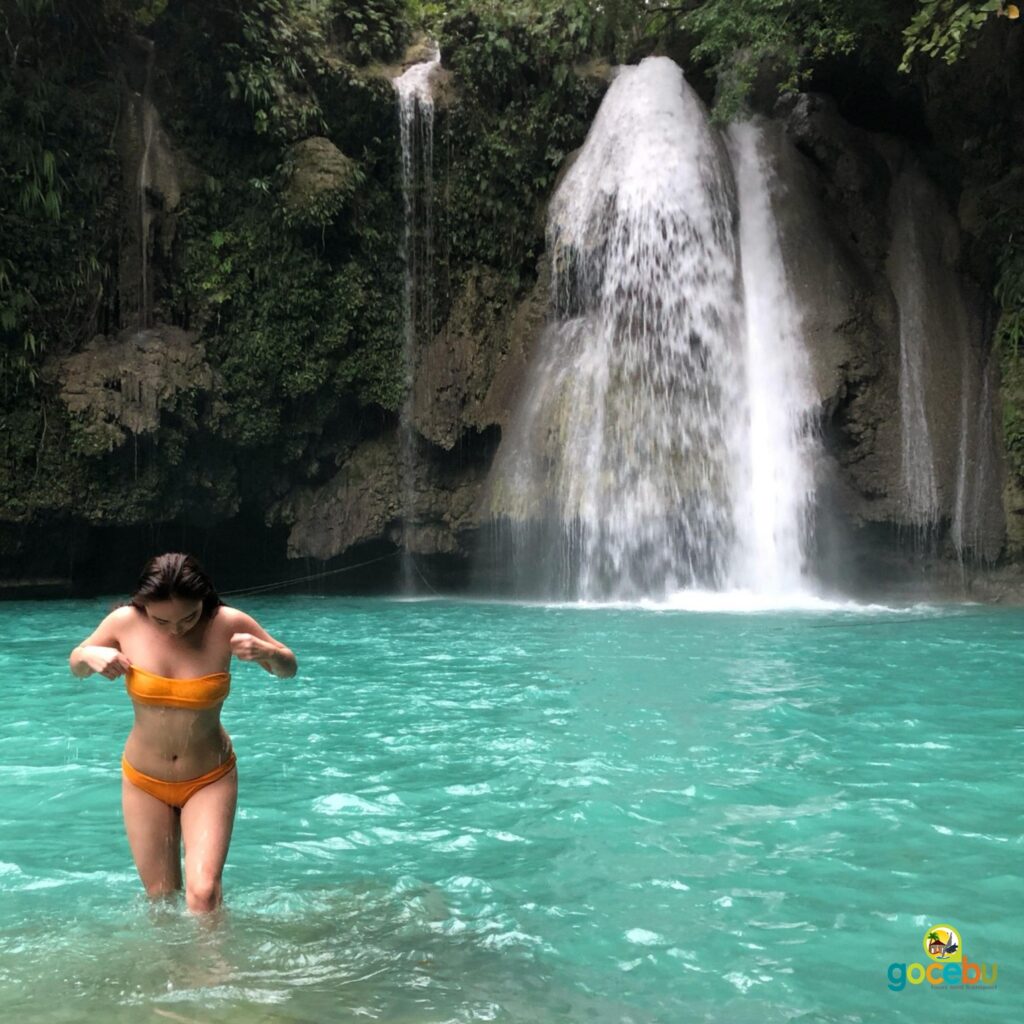
Kawasan Waterfalls is a stunning natural tourist spot located in the small town of Badian in Cebu, Philippines. It is a popular tourist spot in Cebu South that has been drawing visitors from all over the world for many years. The waterfall consists of three cascading falls, with the tallest being approximately 40 meters high. The falls are fed by the Matutinao River and surrounded by dense vegetation, providing a serene and tranquil ambiance that visitors find enchanting.
To reach the Kawasan Waterfalls, visitors can take a scenic 30-minute trek from the entrance through a winding and lush green trail. It is an enjoyable and refreshing experience, with visitors crossing small streams and enjoying the surrounding nature. Once at the falls, visitors can take a dip in the cool, clear water and enjoy a refreshing swim. The water is perfect for swimming, diving, and even snorkeling, allowing visitors to explore the underwater world beneath the falls. Although the bamboo raft rides and restaurants that previously existed may no longer be available, visitors can still enjoy the natural beauty of the falls and explore the surrounding area.
For adventure seekers, Kawasan Waterfalls offers exciting activities such as canyoneering, which involves jumping off cliffs and sliding down natural water slides in the river. This activity is not for the faint-hearted, but it is a thrilling and exhilarating experience that will leave you with unforgettable memories.
To ensure the preservation of the area, visitors are encouraged to respect the environment by not littering and following the rules and regulations set by the local authorities. It is also recommended to visit during weekdays if possible, as the falls can get crowded on weekends and during peak seasons.
13. Kawasan Canyoneering
Kawasan Canyoneering is a popular outdoor activity located in Badian, Cebu, Philippines. It involves trekking through the beautiful landscape of the Kanlaob River and jumping off cliffs into the clear blue water below.
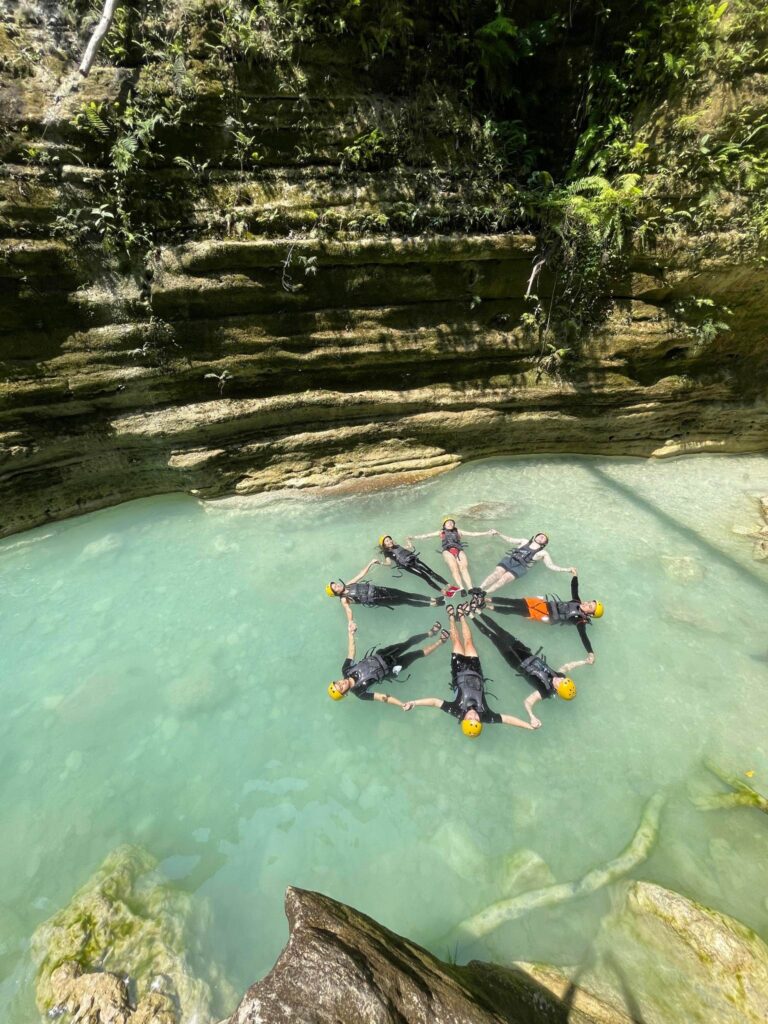
To prepare for canyoneering, it is important to wear appropriate clothing and footwear that can get wet, such as quick-dry shorts and sturdy sandals or water shoes. It is also recommended to bring a change of clothes, a waterproof bag for personal belongings, and sun protection such as a hat and sunscreen.
Before starting the adventure, participants must attend a safety briefing and be equipped with safety gear such as a helmet and life vest. It is crucial to follow the instructions of the trained guides and avoid taking risks that could put oneself or others in danger.
During the canyoneering experience, adventurers will have the opportunity to swim, climb, jump, and slide through the river canyons. The jumps can range from small ones to big ones, the highest one being approximately 30 feet. However, all jumps are optional and can be bypassed by walking around if preferred.
The highlight of the canyoneering is the stunning Kawasan Falls, where participants can take a refreshing dip in the turquoise pools and admire the natural beauty of the area.
14. Whale Sharks
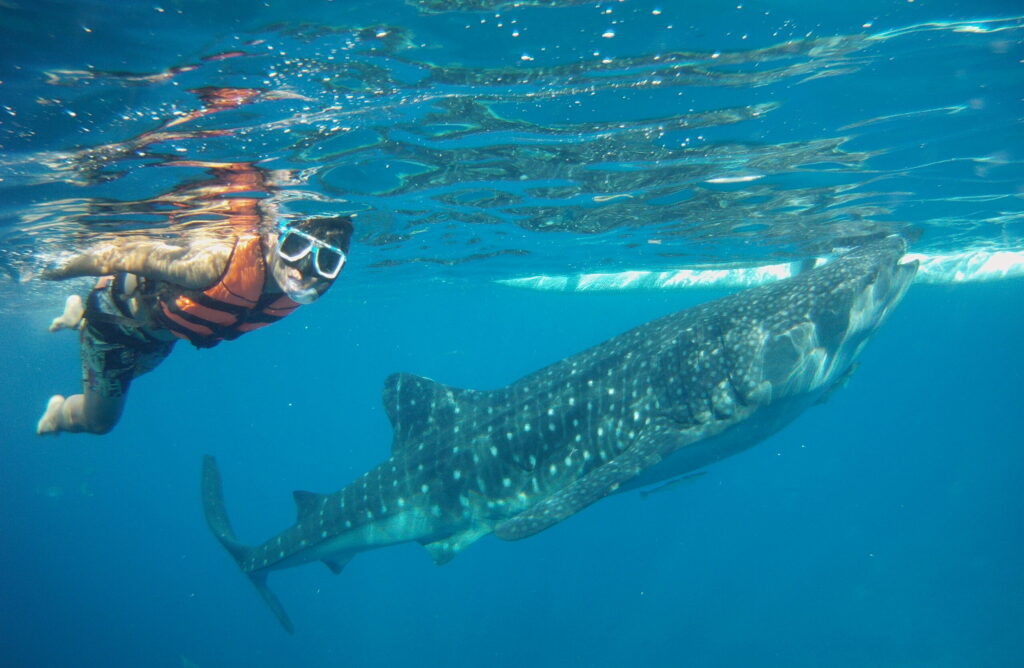
A popular tourist activity in Oslob, a small town in the southern part of Cebu Island in the Philippines. The whale sharks, locally known as “butanding,” can be found in the waters off Tan-awan village in Oslob, where they come to feed on plankton. The activity is regulated by the local government to ensure the safety of the whale sharks and the visitors.
To participate in the Oslob Whale Shark Watching, visitors need to go to the Whale Shark Watching Briefing Center to register and attend a short orientation. The activity is usually available from 6:00 am to 12:00 pm, and visitors are required to wear life vests and not to touch the whale sharks or use any flash photography. Tourists can also rent snorkeling gear or bring their own.
Visitors are usually taken on a boat with a guide and a spotter to the area where the whale sharks are feeding. They can observe the gentle giants swimming in the clear waters and even swim alongside them, as the whale sharks are accustomed to human presence. The activity usually lasts for about 30 minutes, and visitors can take photos and videos to capture the experience.
Apart from the Whale Shark Watching activity, Oslob also offers other attractions, such as the Tumalog Falls, a cascading waterfall with crystal clear water, and the Sumilon Island, a white sand beach with turquoise waters.
15. Sumilon Island
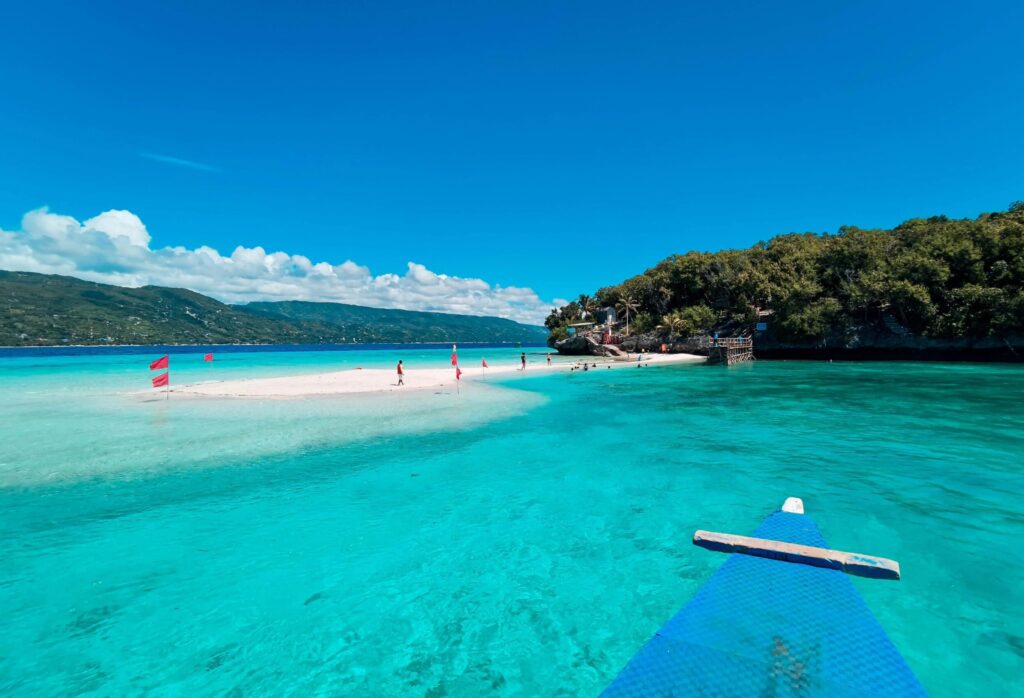
A stunning island located off the southeastern coast of Cebu province, in Oslob. It is a popular tourist spot in Cebu South for tourists due to its clear turquoise waters, white sand beaches, and diverse marine life. There are plenty of things to do on Sumilon Island, including swimming, snorkeling, and diving.
One of the main attractions on the island is the Sumilon Island sandbar. This pristine strip of white sand extends into the ocean, and its crystal clear waters make it a perfect spot for swimming and snorkeling. Visitors can also explore the island’s coral reefs, which are home to a variety of marine life, including colorful fish, sea turtles, and even whale sharks. Snorkeling and diving tours are available, allowing visitors to get up close and personal with the marine life.
In addition to its natural beauty, Sumilon Island also has a rich history. The island was once a refuge for fishermen during typhoons and a place of rest for pirates. Visitors can explore the island’s historic lighthouse, which was built in 1902 and is still in operation today. The lighthouse offers stunning views of the surrounding ocean and the island’s rugged coastline.
For those looking for a bit of adventure, Sumilon Island also offers hiking trails through its lush forests. The trails offer scenic views of the island’s natural beauty, including its waterfalls and unique rock formations.
16. Tumalog Waterfalls
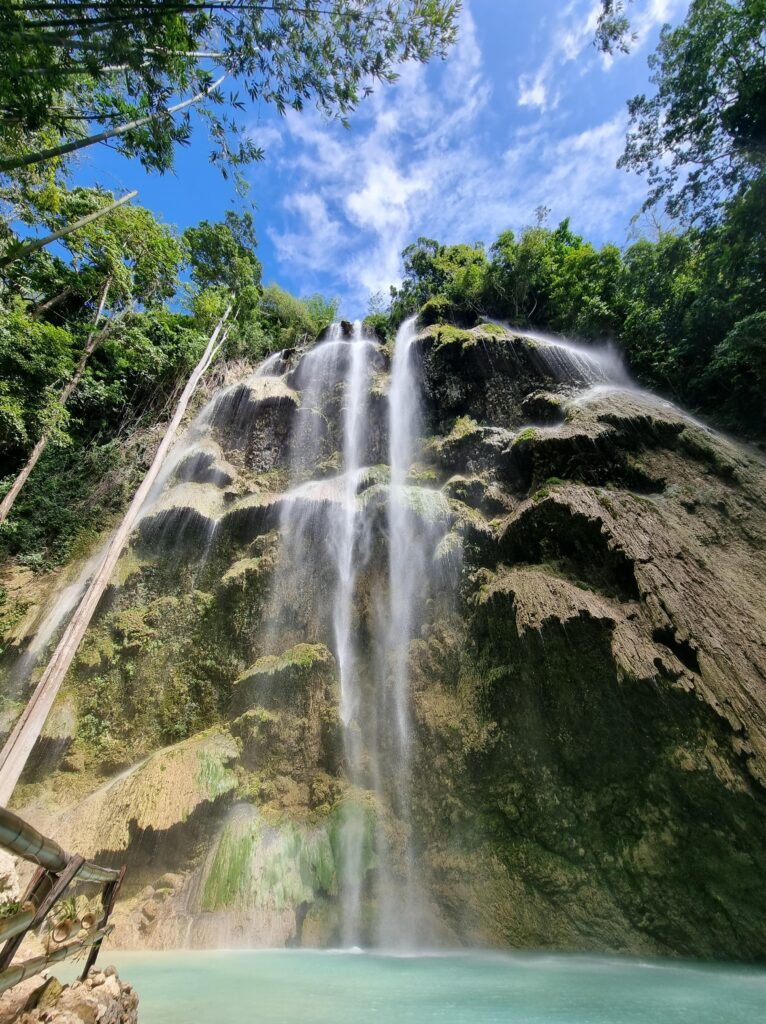
Visitors to Tumalog Waterfalls can take in the majestic flow of the waterfall, which is undoubtedly the main attraction. The waterfall has a natural pool at its base where visitors can take a refreshing dip in the cool water. The area is also an excellent spot for a picnic, relaxing, and enjoying nature.
The picturesque Tumalog Waterfalls is an excellent spot for photography. Visitors can take snaps of themselves with the falls as their background or take panoramic shots of the waterfall and its surroundings. A short trek through the lush jungle leads visitors to the waterfall’s base. The path is well-maintained, making it a comfortable hike for people of all ages.
According to local legends, Tumalog Waterfalls is a sacred place where fairies and spirits live. Many locals also believe that the waterfall has healing powers and that the water has a soothing effect on the skin. Visitors should bring comfortable walking shoes, towels, and a change of clothes if they plan to swim in the pool. It is also advisable to bring insect repellent and sunscreen to protect against sunburn and bug bites.
Tumalog Waterfalls is open to visitors from 6:00 AM to 6:00 PM daily, and an entrance fee is required to access the area. Overall, Tumalog Waterfalls is a must-visit destination in Oslob, Cebu, for nature lovers and adventure seekers.
17. Osmeña Peak
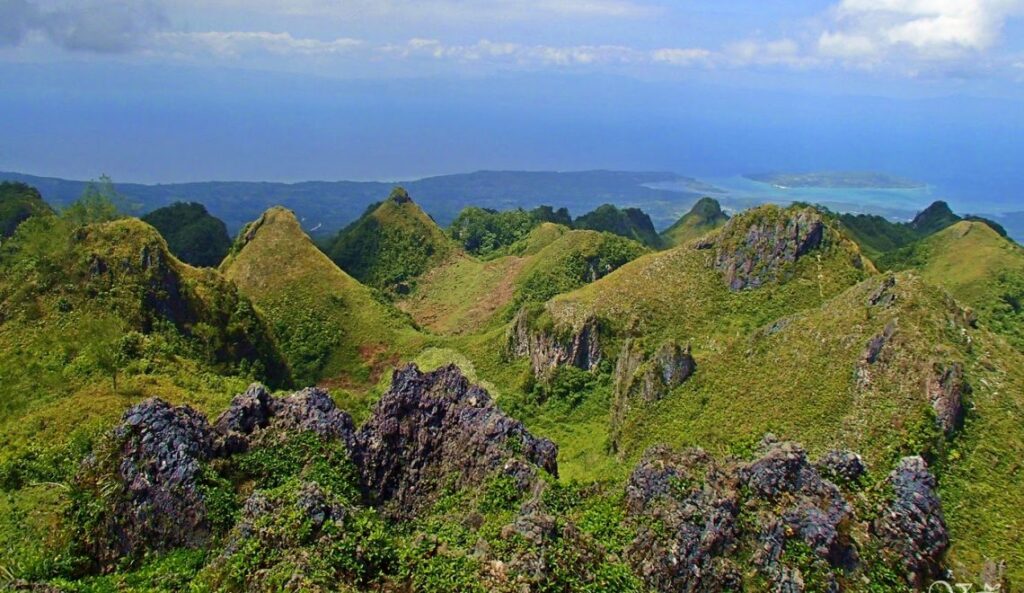
Osmeña Peak is the highest peak in Cebu, Philippines, and a popular hiking destination. It stands at an elevation of 1,013 meters above sea level, offering panoramic views of the surrounding landscape. To reach the peak, visitors can embark on a trek through the Mantalongon mountain range, which takes approximately 30-45 minutes depending on one’s pace.
The hiking trail is relatively easy, with some steep ascents and rocky terrain. It is advisable to wear comfortable and sturdy shoes and bring enough water and snacks to sustain the trek. Along the way, visitors can also admire the lush vegetation and diverse flora and fauna.
Once at the peak, visitors can enjoy a breathtaking view of the surrounding hills, mountains, and neighboring islands such as Negros and Bohol. The best time to visit is early morning or late afternoon when the sun is not too harsh, and the skies are clear. Visitors can also set up camp at the peak’s camping area and spend the night under the stars.
Osmena Peak is a popular tourist spot in Cebu South for both local and foreign tourists, and it can get crowded during weekends and holidays. It is also a significant landmark in Cebu, as it bears the name of one of the Philippines’ most distinguished politicians and statesmen, Sergio Osmena Sr.
18. Monastery of the Holy Eucharist (Simala Shrine)

The Monastery of the Holy Eucharist, also known as the Simala Shrine, is a famous pilgrimage site located in the town of Sibonga, Cebu, Philippines. The shrine is home to the miraculous image of the Our Lady of Simala, which is said to have brought about numerous miracles and healings to its devotees.
Visitors can expect to see a stunning church complex with intricate designs and details, including a majestic castle-like façade, multiple domes, and colorful mosaics. The interior is adorned with ornate carvings, chandeliers, and stained glass windows.
One of the highlights of the shrine is the Chapel of the Miraculous Mama Mary, which houses the image of Our Lady of Simala. Devotees flock to the chapel to offer their prayers, petitions, and thanksgiving.
There are also several prayer rooms and meditation areas within the complex, where visitors can spend quiet moments in reflection and contemplation. The outdoor Stations of the Cross provide a spiritual journey for pilgrims, while the landscaped gardens and scenic views offer a serene and peaceful atmosphere.
Aside from its religious significance, the Simala Shrine has also become a popular tourist spot in Cebu South, drawing visitors from all over the world. There are various souvenir shops, food stalls, and amenities within the complex to cater to the needs of visitors.
19. Bantayan Island
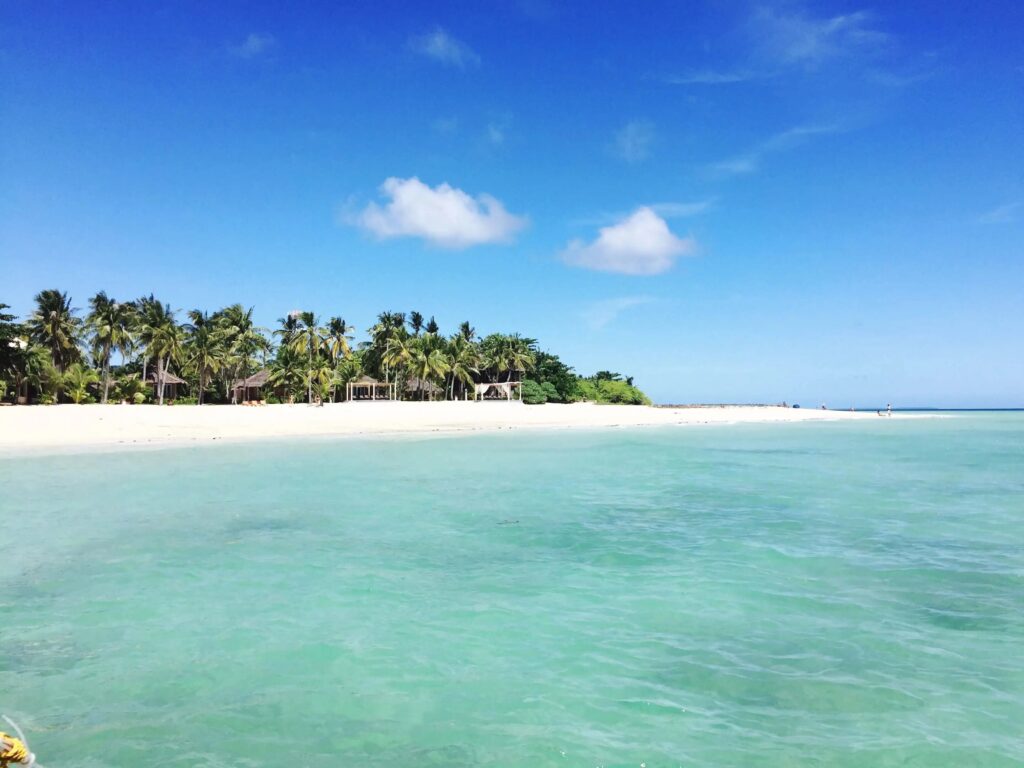
Bantayan Island is a beautiful tropical paradise located in the Visayas region of the Philippines. Specifically, it can be found in the northern part of Cebu province, with the town of Santa Fe serving as the main gateway to the island.
The island boasts of crystal clear waters, fine white sand beaches, and a laid-back atmosphere that is perfect for those who want to escape the hustle and bustle of city life. Visitors can spend their days lounging on the beach, swimming, snorkeling, or diving to explore the vibrant marine life.
One of the top attractions on the island is the stunning Paradise Beach, which is known for its powdery white sand and turquoise waters. Other must-see destinations include the Ogtong Cave, a unique cave pool that is great for swimming and relaxation, and the Virgin Island, which is a small uninhabited island that offers stunning views and pristine beaches.
Visitors can also explore the local culture and cuisine by visiting the town center of Santa Fe, where they can find local restaurants serving fresh seafood and other Filipino specialties. For those who want to learn more about the island’s history, they can visit the Bantayan Church, which is a 400-year-old structure that is considered as one of the oldest churches in the country.
20. Cebu Safari and Adventure Park

Cebu Safari and Adventure Park is also considered as one of Cebu tourist spot located in Barangay Corte, Carmen, Cebu, Philippines. The park boasts of a vast 170-hectare property that houses over 1000 animals from different parts of the world, making it the biggest safari park in the Philippines.
Visitors can experience an exciting safari adventure in the park by availing of the guided tour on board a safari vehicle. The tour takes around two hours and covers different habitats, such as the African Savanna, the Indo-Malayan Region, and the Americas. Guests can observe various animals, including giraffes, zebras, lions, tigers, and many others, in their natural habitat.
Aside from the safari tour, the park also offers other attractions and activities that cater to visitors of all ages. Guests can interact with some animals at the Animal Encounter, where they can feed and take photos with some of the park’s resident animals, such as the kangaroos, camels, and ponies. The park also has a Bird Show, where guests can watch different species of birds showcase their natural behaviors and talents.
Moreover, visitors can experience the thrill of riding the Sky Bike, a bike that runs on a cable above the park’s landscape, giving them a bird’s eye view of the park’s stunning scenery. There’s also a Waterpark inside the Safari, where visitors can cool down and have fun in the different water attractions such as water slides and wave pool.
In terms of facilities, the park has several dining options, souvenir shops, and restrooms conveniently located around the park. It also has a spacious parking lot that can accommodate a large number of vehicles.
The attractions in Cebu are a blend of historical landmarks, beautiful beaches, and exciting activities. This guide to Cebu’s tourist spots is organized by area, so you can visit multiple places in one go.
Don’t forget to look at our Cebu Tour package for a worry-free journey. There are still lots of places to explore in Cebu. So, get your bags ready… and discover Cebu with GoCebu Tours and Transport!

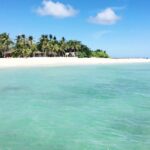



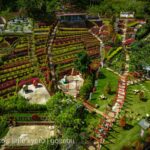



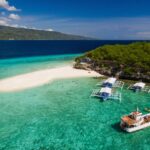
Wow, this article has really opened my eyes to the beauty of Cebu! I had no idea there were so many amazing tourist spots to explore. Thanks for sharing this comprehensive guide – I can’t wait to plan my trip and experience the wonders of Cebu firsthand!
Hi Novie,
Thank you so much for your kind words!
Regards,
GoCebu Team
The content provides an extensive guide to the best tourist spots in Cebu, highlighting a mix of historical sites, natural beauty, and cultural experiences.
Hi Ralph,
Thanks for reading our blog.
For our tour services, we will send you an email for more details.
Regards,
GoCebu Team